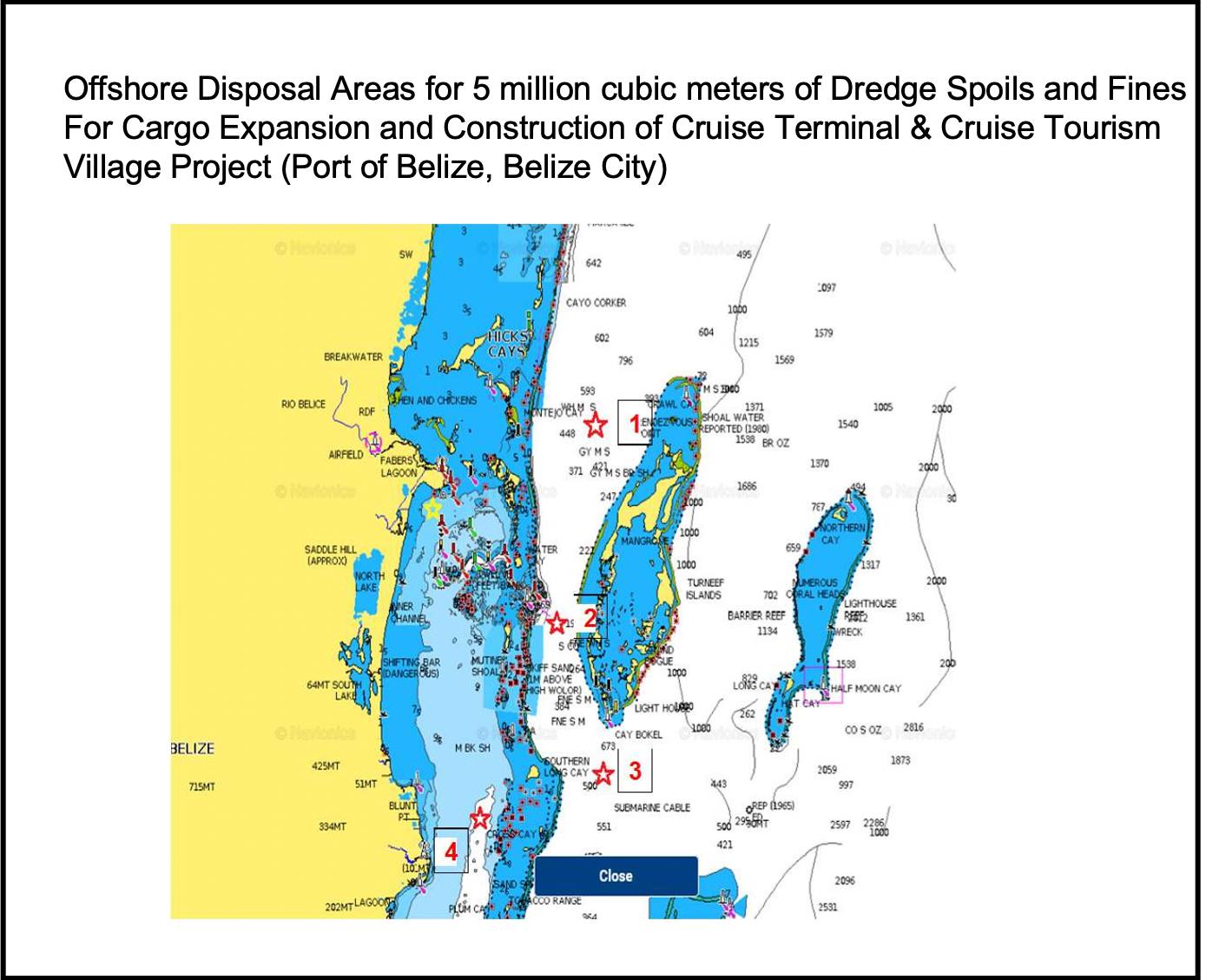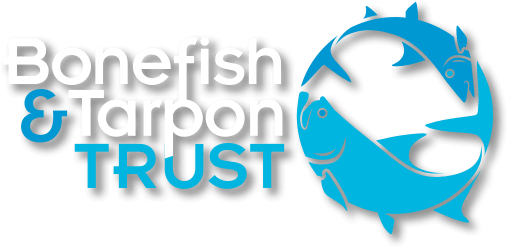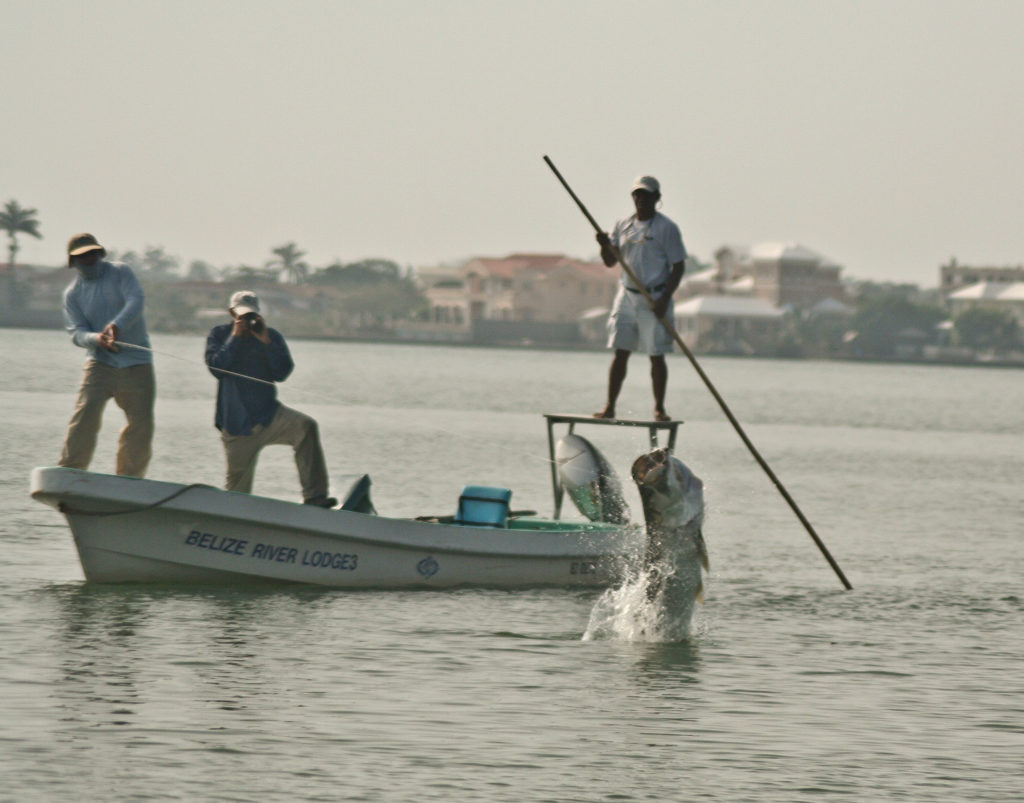Photo: Dr. Aaron Adams
Bonefish & Tarpon Trust is concerned about the potential regional effects of the planned Cargo Expansion and Construction of Cruise Terminal & Cruise Tourism Village in Belize City, due to the proposal to dispose of the dredge materials in areas that will damage coastal habitats and fisheries. We anticipate that the plumes from dredging will negatively impact nearshore fisheries in Central Belize. But of greater concern is that as presently planned, 5 million cubic meters of dredge spoil will be dumped in coastal waters of Belize, likely impacting seagrasses, corals, and other habitats, as well as fish that depend on these habitats.
The Environmental Impact Assessment for disposing of the dredge spoil shows that offshore disposal at Disposal Sites 3 and 4 will negatively impact the Belize Barrier Reef, as well as numerous atolls and cayes. The currents at Site 1 will likely carry the dredged sediment long distances, further damaging habitats. The preferred Site 2 is nearest the dredging location, which is between the barrier reef and Turneffe Atoll. Clearly, all of these sites will have negative impacts on habitats and fisheries, both at the disposal sites and when the dredge spoil is transported by currents to other locations. In addition, even after the dredge spoil is deposited, the wave energy and currents associated with hurricanes will stir up and spread these sediments, with further impacts on habitats and fisheries.
BTT supports the views of many non-governmental organizations and the Belize Fisheries Department in opposition to this project.
Sadly, this is another example of the systemic issues that affect the environmental review and enforcement processes regarding coastal Belize. Although the dredging for the Cargo Expansion and Construction of Cruise Terminal & Cruise Tourism Village is the largest such project to date, we have many examples of projects that have caused significant environmental impacts to coastal resources of Belize. Some of the most notable are:
- Dredging along the coast in Placencia
- Dredging near Placencia to fill Lil Bugle Caye, which led to the destruction of live patch reefs (Fig 1)
- Harvest Caye
- Continuous dredging of the flats in the northern coastal complex, especially in the bay area of Ambergris Caye and Caye Caulker (Fig 2.)
- Proposed over-the-water structures on the flats within marine protected areas; for example, Blackadore Caye and Cayo Rosario in Hol Chan Marine Reserve (Fig. 3)
The common result of these projects is the loss of seagrasses and mangroves and killing of corals. These habitats are essential to sustain the tourism and fisheries (commercial, sport, and recreational tourism based) sectors. As coastal habitats are lost and degraded, so are the economic and social benefits of the sectors that rely on a healthy marine ecosystem. A recent analysis found that Overnight Tourism (including recreational fisheries) in 2018 generated as export 59% of Belize’s foreign exchange earnings (BZ $819.7 million), with cruise tourism contributing 12% (BZ$ 172.8 million) and other industries 29% (BZ$ 398.62 million). The flats fishery alone has an annual economic impact of BZ $110 million and supports thousands of jobs.
For conservation efforts to be successful, it is essential that we take a broad-scale approach that addresses systemic causes of these repeated assaults on coastal habitats. First, the National Tourism Master Plan for Belize 2030 should be revisited so that natural resources receive greater attention. The plan recognizes Belize as a tourism destination thanks to the “excellent natural resources and strong cultural heritage” but does not integrate sustainability of natural resources that are necessary to support this tourism as well as local resource needs. The plan’s Sustainable Tourism Development Program is designed for conservation of natural resources for its stability as a business and competitiveness, and not for the livelihoods of Belizean citizens and culture of Belize.
Second, the environmental review and enforcement process is broken. The same entities that are charged with processing applications and creating the Environmental Impact Assessments and Environmental Compliance Plans are also charged with enforcing regulations. Moreover, agency decisions can be overridden by administrators.
Third, in many respects we lack suitable data to truly evaluate project proposals, thus Environmental Impact Assessments are chronically inaccurate. For example, there is urgent need for mapping data so that current and future proposals can be evaluated in the context of habitat loss and damage that has already occurred, and to show the link between habitats and the economically important sectors that rely on these habitats.
The planned Cargo Expansion and Construction of Cruise Terminal & Cruise Tourism Village in Belize City doesn’t appear to take fisheries and habitats into consideration, which will have long-term consequences. The dredge disposal plans should be reconsidered, and the current approach to project evaluation should be revised.





